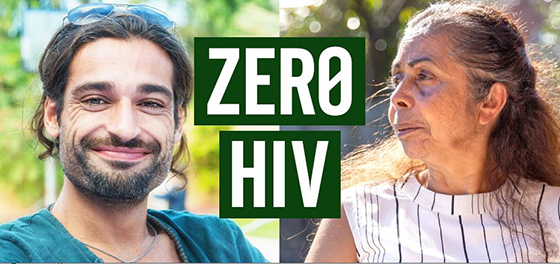 Why reach for Zero in 2019?
Why reach for Zero in 2019?
Zero HIV risk
People living with HIV in NSW on anti-retroviral treatment who have an undetectable viral load (UVL) have Zero risk of transmitting HIV to our sexual partners.
When we use Treatment as Prevention (TasP), we become part of the solution to reach for Zero HIV risk.
With the added support of pre-exposure prophylaxis (PrEP), post-exposure prophylaxis (PEP) and other combination prevention strategies of harm reduction like needle and syringe programs (NSPs) alongside the central role of condoms in reducing the risk of HIV, let’s all reach for Zero HIV risk.
Zero HIV transmission
With 90% of people living with HIV diagnosed, let’s reach further to achieve Zero HIV transmission in NSW by 2020.
Australia has sustained a strong record of virtual elimination of HIV transmission among mother-to-child, people who inject drugs and sex workers.
Let’s strengthen that awareness, testing and treatment across our communities who are disproportionally impacted by HIV (Aboriginal and Torres Strait Islander peoples, heterosexual men and women, trans and gender diverse people, and people from culturally and linguistically diverse backgrounds).
Let’s leave no one behind!
Zero HIV discrimination
We challenge stigmatising attitudes or discriminatory practices whenever and wherever we find these, to reach Zero HIV stigma and discrimination.
Without HIV stigma and discrimination, the barriers to HIV testing, treatment and care are reduced which in turn improves the quality of life for people living with HIV and empowers people at risk of acquiring HIV to make informed choices about their sexual health.
Zero HIV deaths
Almost half of all people diagnosed with HIV in NSW are in the late stage of infection with an increased risk of advanced HIV disease (AIDS) or death.
When people living with HIV feel fatigued and depressed, and disengage from treatment and care this can also result in an increased risk of advanced HIV disease (AIDS) or death.
Let’s increase awareness and access to HIV testing to reduce late diagnoses, while reaching out and supporting each other to remain in control of our care and connected, as we reach for Zero HIV deaths.
To support this messaging, please download the ‘Zero HIV’ brochure as an A4 page or a flyer.






